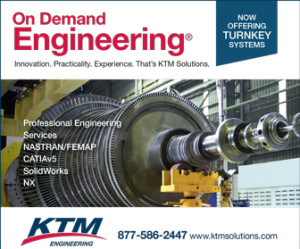I have been told that aerospace engineers have a reputation of being “arrogant.” In fact, my specific discipline of expertise (air-frame structures) had a reputation of being some of the most arrogant even among aerospace engineers. Arrogance is defined as “being proud in an unpleasant way and behaving as if you are better or more important than other people.” (Credit Cambridge Dictionary). Yikes.
Maybe it would have been more appropriate to classify this behavior as confidence. Confidence is defined as “a  feeling of having little doubt about yourself and your abilities, or a feeling of trust in someone or something.” (Credit Cambridge Dictionary). Confidence can come from repeated success or the ability to do something well (the definition of competence). In my career at KTM Solutions as well as one of the premier aerospace companies, the people I worked with and worked for were very competent. We all believed in our training, the process, and our God given talents. Maybe to some on the outside, this confidence may have appeared as arrogance.
feeling of having little doubt about yourself and your abilities, or a feeling of trust in someone or something.” (Credit Cambridge Dictionary). Confidence can come from repeated success or the ability to do something well (the definition of competence). In my career at KTM Solutions as well as one of the premier aerospace companies, the people I worked with and worked for were very competent. We all believed in our training, the process, and our God given talents. Maybe to some on the outside, this confidence may have appeared as arrogance.
By human nature, it is easy to see how competence can lead to confidence, and may even appear as arrogance. Unfortunately, neither confidence nor arrogance necessarily requires competence. Competence is defined as “the quality or state of having sufficient knowledge, judgment, skill, or strength (as for a particular duty or in a particular respect).” (Credit Merrium-Webster).
 I would much rather be marked by the reputation of competence. Take any rabid college football fan. The way they behave, you would think they were personally responsible for the success of their team. These fans can display extreme confidence and yes arrogance even though they have no ability (competence) to play the game.
I would much rather be marked by the reputation of competence. Take any rabid college football fan. The way they behave, you would think they were personally responsible for the success of their team. These fans can display extreme confidence and yes arrogance even though they have no ability (competence) to play the game.
Often times, it’s easier to identify confidence and arrogance than it is to find competence. Competence is best identified through testing and experience. When KTM Solutions selects suppliers, we try to find manufacturers with a proven track record of success. Samples of their work, testimonials from references, and proof of abilities marked by repeated performance are good identifiers of competence. Anyone can display a confident or arrogant attitude without any real substance behind the swagger.
I believe that every industry, profession, or vocation can develop a certain amount of pride that can breed arrogance. But, how can we be assured that the confidence/arrogance is backed up by competence? Competence can often be demonstrated through testing. This is why anyone would likely be well served to trust a professional engineer that holds active licensure to practice engineering.
From the National Society of Professional Engineers (NSPE) website, “A century ago, anyone could work as an engineer without proof of competency. In order to protect the public health, safety, and welfare, the first engineering licensure law was enacted in 1907 in Wyoming. Now every state regulates the practice of engineering to ensure public safety by granting only Professional Engineers (PEs) the authority to sign and seal engineering plans and offer their services to the public.
To use the PE seal, engineers must complete several steps to ensure their competency.
- Earn a four-year degree in engineering from an accredited engineering program
- Pass the Fundamentals of Engineering (FE) exam
- Complete four years of progressive engineering experience under a PE
- Pass the Principles and Practice of Engineering (PE) exam
Most states also require that engineers maintain and continually improve their skills throughout their careers through continuing education requirements. In addition, professional engineers must adhere to a code of ethics that prevent the engineer from operating outside their area of competency. In fact, the following can be found on the NSPE website as the fundamental canons of engineering professional ethics:
Engineers, in the fulfillment of their professional duties, shall:
- Hold paramount the safety, health, and welfare of the public.
- Perform services only in areas of their competence.
- Issue public statements only in an objective and truthful manner.
- Act for each employer or client as faithful agents or trustees.
- Avoid deceptive acts.
- Conduct themselves honorably, responsibly, ethically, and lawfully so as to enhance the honor, reputation, and usefulness of the profession.
The confident and arrogant can appear to have it all together. Don’t mistake confidence and arrogance for competence. Make sure the claims of your suppliers and service providers are backed by proven skills and knowledge. Insure that you are dealing with competence.
 Paul V. Kumler, P.E. is president of KTM Solutions, an engineering company that services the aerospace and large scale manufacturing industries. In addition to aero-structures engineering services, KTM Solutions designs and builds tooling supporting a broad clientele and various industries. The company is headquartered in Greer, South Carolina with remote offices in Charleston, South Carolina. Mr. Kumler serves in several volunteer roles including the SC Aerospace Advisory Board. Mr. Kumler, a professional engineer, is licensed in Louisiana, South Carolina, Texas and Washington. He is married to Ginger A. Kumler and has two grown children and two grandchildren.
Paul V. Kumler, P.E. is president of KTM Solutions, an engineering company that services the aerospace and large scale manufacturing industries. In addition to aero-structures engineering services, KTM Solutions designs and builds tooling supporting a broad clientele and various industries. The company is headquartered in Greer, South Carolina with remote offices in Charleston, South Carolina. Mr. Kumler serves in several volunteer roles including the SC Aerospace Advisory Board. Mr. Kumler, a professional engineer, is licensed in Louisiana, South Carolina, Texas and Washington. He is married to Ginger A. Kumler and has two grown children and two grandchildren.



Be the first to comment on "Arrogance, Confidence, or Competence?"